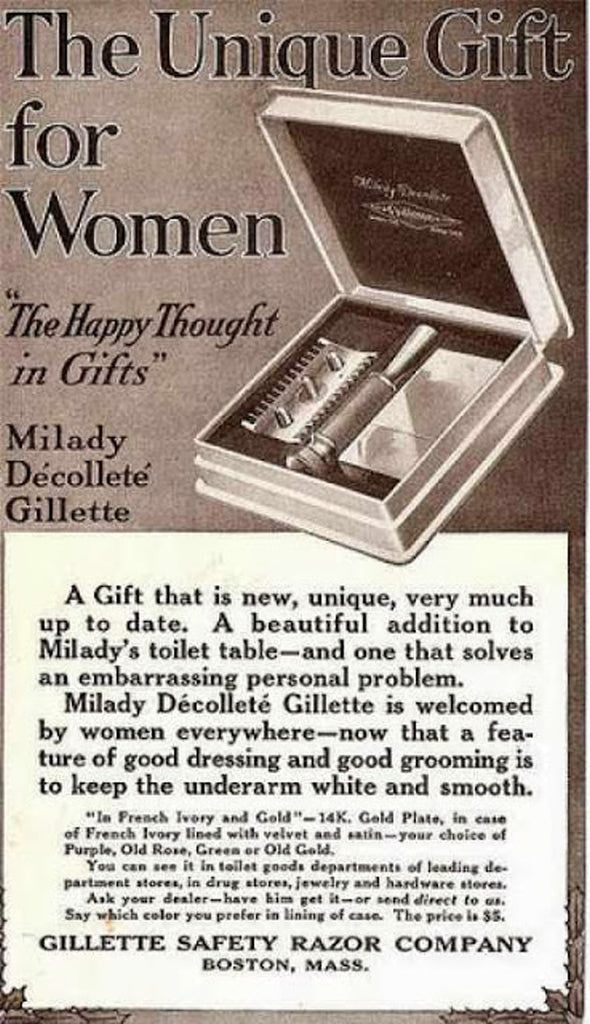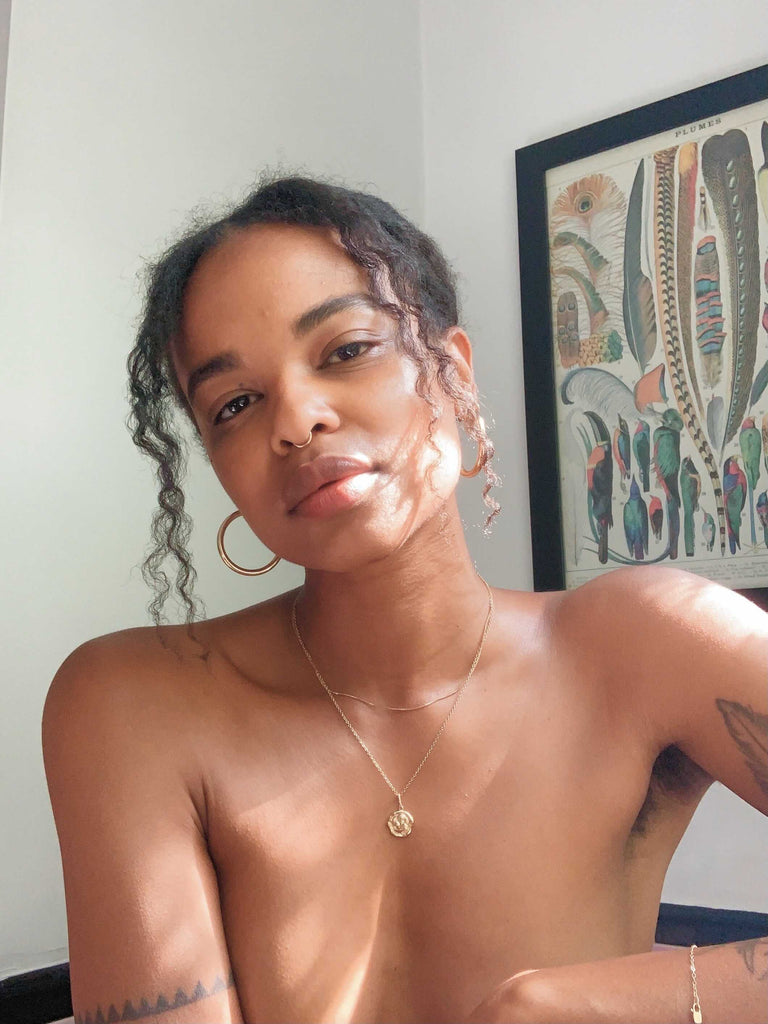I made the choice to stop shaving nearly 10 years ago after realizing that, when thinking about why I continued to shave, I didn’t have a good answer. Up until that point, I had never really questioned why I kept up this ritual. But when I asked myself that question— the why— I realized that I wasn’t shaving because I liked the feeling of hairless skin or because I felt sexier without a thin layer of peach fuzz on my legs.
I was shaving because it was what I was supposed to do, what everybody who was assigned female at birth did, and I found that I did it with the same mindless, joyless energy that propelled me to regularly brush my teeth or trim my toenails.
There was a time when the idea of shaving felt like a rite of passage into a kind of womanhood I coveted, and I’ll never forget the feeling I had in my body the day my mom allowed me to shave my legs for the first time. I might’ve been 12 but I felt grown and excited to flaunt what felt to me like a badge of adulthood that I longed to embody. It’s hard to pinpoint why shaving felt so special to me back then, why slathering my legs with cucumber-scented shaving cream and sporting bandaids on my knees where the blades cut too close felt so big and important. Maybe it’s because it felt like it was my very first act of agency over my body, that I was old enough to look at my legs and say, “I want you to be hairless” and had hands steady enough to make it so.
But as I grew older, the novelty of shaving wore off and the excitement of doing this act was shadowed by the utter chore of it. There would be so many times where, as I was precariously balancing my soapy legs on a slippery shower ledge to do once again what it felt like I had done only two days ago— I would mutter to myself, “Why am I doing this?” I would ask this question many times with zero intention to actually answer it, until one day almost 10 years ago.
“Why” I am shaving?
When I took this question even deeper and explored why I continued to do something that I derived no joy or pleasure from, it brought up all these feelings within me about what societal beauty standards had taught me: how a hairless woman is feminine and desirable; how having hair under your arms or on your vulva is unhygienic; how men’s expectations of hairless women were standard and that if you went against this tradition you wouldn’t get chosen.
On the surface it seemed like shaving was something that all women had done since the beginning of time, but even I knew that wasn’t true because of all the jokes I heard growing up about European women with bushes under their arms and peach fuzz above their lips. So I started to do some research on the invention of shaving to try to understand how this recent (historically speaking) tradition became such second nature in the US.
I found that up until the early 1900s, women largely did not have the same relationship to shaving as they do now. That they rarely (if at all) shaved their legs or underneath their arms and there wasn’t a correlation between hairlessness and femininity or hygiene that is the cultural impetus we have now.
The only reason women started shaving was because in 1915 a razor company, who wanted to sell more of their product, created an ad that convinced women of everything they have internalized today about body hair: that having hair anywhere else besides their heads was unhygienic and unfeminine, and that in order to be “a woman of fashion, the underarm must be as smooth as the face.” Seeing the old-timey ads that manufactured, then exploited, the insecurities of women to get them to buy more products (and that also created this narrative of respectability politics) absolutely floored me.
 And so when I asked myself that question again, Why am I shaving? and the answer was:
And so when I asked myself that question again, Why am I shaving? and the answer was:
“Because I was taught that I have to do this to uphold standards of beauty and respectability that were sold to me by capitalism under the guise of concern for my health”
I never shaved again.
Questioning cultural narratives
Choosing not to shave is a personal decision I made as a way to free myself from very old and very oppressive beauty standards rooted in white supremacy and capitalism. That decision was important to me to help reclaim my body as mine from the grips of harmful, sexist narratives. And ultimately that, for me, is liberation—challenging narratives that have always seemed unquestionable, all while creating new narratives for yourself that are in alignment with who you want to be.
Questioning cultural narratives about our bodies is crucial because most of what we’ve been taught has come down the pipeline of misogyny, sexism, patriarchy, and white supremacy. Oftentimes, the belief systems we’ve been given about our bodies have been given without our active choosing. It might seem like it’s innocent because it was passed down through tradition, but those traditions are usually connected to systems of oppression that have been designed to manipulate and distort who we see when we look in the mirror. Even if, in your questioning of these cultural norms, you decide, “That’s nice, and I still want to shave” at least you’re making a conscious decision to do it rather than continuing to go along without autonomy or agency.
I’ll say here that I respect and honor all people who choose to do whatever they want with and to their bodies— including shaving, particularly if they are making an active decision to participate in those things because it genuinely makes them feel good about themselves. As for me, shaving was a joyless chore that I wanted to divest from as a way to take back the power that I felt was being stolen from me, and then sold back to me in the form of a hairless armpit.
One of the things that was important to me was going deeper than questioning shaving itself. It was more about the revulsion I felt about my own body hair that prompted me to remove it the moment it began to resurface. It was about the way I would question my own desirability if I forgot to shave my bikini line before putting on a swimsuit. It was about how I would talk to myself when I saw the hair beginning to form under my belly button. That was what needed to be unlearned and shifted. Not shaving, for me, was the way I healed myself from those narratives.
How to unlearn what we were taught about our bodies
I encourage people to get into the habit of observing their self-talk, of listening to what they say about themselves and their body on a daily basis. This’ll take some practice and some intentional pausing as our thoughts are often on autopilot. But I think it’s important to be curious about what exactly it is you say about your body so that when you go to unlearn it, you know exactly what it is you’re trying to unlearn.

The key here is to not be judgmental about your self-talk or to criticize yourself about it; just observe it without creating any deeper narratives about it. If it’s helpful, you can write down the narratives you’ve adopted about your body thanks to social norms. Maybe it’s about body hair, maybe it’s about keeping your legs crossed, maybe it’s about what you’ve been taught is beautiful or desirable. Once you have a good idea of what needs to be unlearned, start to create shifts in your internal dialogue about these things with affirmations that counter those old narratives.
You can also tailor the people you follow on social media to represent what you’re wanting to reclaim within yourself. One of the best ways I found comfort and confidence in wearing a tank top with a bush under my arms is seeing so many other people I admired doing the same thing. You can’t be what you can’t see, as Marion Wright Edelman says, and it’s so true.
My last tip: Be kind to yourself as you’re unlearning. This won’t be a one and done thing as what you’re unlearning has been with you (and with us as a society) for hundreds of years. Be patient with yourself as you continue to walk this path of liberation.
Ev'Yan Whitney is a Sexuality Doula and author whose work has been featured in Cosmopolitan, Glamour and Vogue. You can follow along with them and read more of their work on @evyan.whitney
Sources and Extra Resources:
Cover photo by @evyan.whitney and first photo taken by @jreiphoto
Bustle: The Sneaky Manipulative History of Why Women Started Shaving